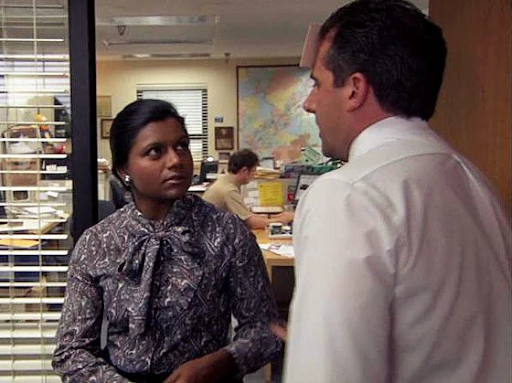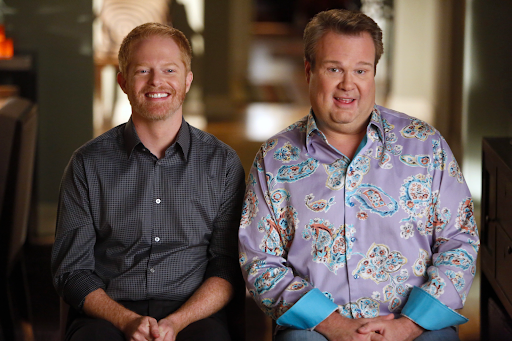Padma Danturty (she/her)Stereotypes are bad … right? Our conversations regarding stereotypes, generalized beliefs about a group of people, are almost always if not exclusively about how bad they are. When thinking about a group you belong to, and its associated stereotypes, have you ever been happy they existed? When thinking about my identity as a queer South Asian, I hate the associated beliefs about the individual groups I’m a part of: “Indians are good at math.” This one stung particularly, because it felt like whenever I progressed as a math student, or a student in general, people thought it was because of my race. It’s almost seen as a given that South Asian students will get good grades and excel in classes, and diminishes the genuine effort and hard work that was put into studying, or whatever it really took to end up there. “Lesbians are just women who can’t get a man.” It really hurt seeing this sentiment online, and I don’t need to explain how ridiculous this statement is. A lot of people seem to think identifying as queer as a young age is performative or fake, and diminishes the true feelings going on. Whether they are applicable or not, are positive or negative, have some truth or don’t, stereotypes hurt. They are limiting and create direct and oftentimes unchanging beliefs about people one doesn’t even know. Despite knowing this, I found myself wanting an “Indian Lesbian” stereotype. A stereotype specific to us desi girls who like girls. A stereotype so prominent that when you heard those words together, you’d think of it. An association with something, anything. How could I want a stereotype when I just described the negative consequences of having them? I think it’s that I’ve always found it challenging to present myself as queer, because it felt like most “lesbian” things were reserved for other people. I’ve never seen people with dark skin and hair dye their hair blue, shave their hair, or look “butch” in general. In high school I wanted to signal that I was queer so much, perhaps to find a girlfriend, but also to find a community. I hated that I had to verbally come out because people didn’t believe an Indian girl could be gay. It shouldn’t be all that shocking; at least, I wished it wasn’t. Based on the conversations I’ve had, many LGBTQ+ people of color have had this issue. Logically, it makes sense that the amount of stereotypes we have are directly correlated to their population. According to the a UCLA School of Law research study, of the LGBTQ+ adults in the US, 52.3% identify as white, 19.9% as latinx, 10.7% as Black, 4.9% as Asian-American, 2.5 Native American, 0.4% as Native Hawaiian/Pacific Islander, and 9.3% as other. This data pretty fairly follows suit with statistics about the racial makeup of America in general, LGBTQ+ or not. Although the amount of lesbians that are Asian seems low, the amount of Asians that are lesbians is surprising. In the same UCLA study, 5% of Asians identify as LGBTQ+, whereas only 4% of white people identify as LGBTQ+. In fact, every minority group has a higher percentage of lesbians than their white counterpart. Basically, the white population in America is more cishet than any other racial group. Despite this, why did I feel like there weren’t any Indian lesbian stereotypes? Stereotypes are generally formed through mainstream media, and one of the biggest is mainstream television. Thinking about the popular television shows I’ve seen, especially shows that target teenagers and young adults, there is almost no Indian lesbian representation. Thinking about some of the most influential shows of our generation that do include LGBTQ+ characters, my mind goes to “Glee,” “The Fosters,” “Modern Family,” “Grey’s Anatomy,” “Brooklyn-99,” “Game of Thrones,” “Shameless,” and I’m sure plenty others. Not all of them include queer women, and if they do, none include a queer woman of Indian origin. Conversely, thinking about influential shows that include Indians, like “Big Bang Theory,” “New Girl,” “The Office,” “Parks and Recreation,” not all of them include Indian girls; none include a queer woman of Indian origin. Ultimately, there is nothing to base the Indian Lesbian on, and while in my adolescence it was frustrating to not have a way to signal my queerness, perhaps moving forward we can finally begin to define what it means to be South Asian and queer. Not only that, but our diversity within this population can showcase that there need not be one stereotype to define us, because perhaps what I was looking for was normalcy, not a preconceived notion. While I was looking for an easy stereotype to turn towards, proper media representation would have been more beneficial in showing that we do exist and, though we have similar experiences, are unique in our own ways. If I truly need a stereotype: that stereotype can be me, because I contribute to the definition of the Indian Lesbian.
0 Comments
Leave a Reply. |
Search by typing & pressing enter


